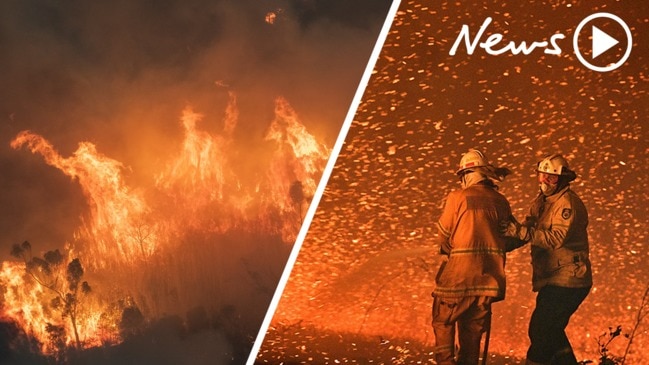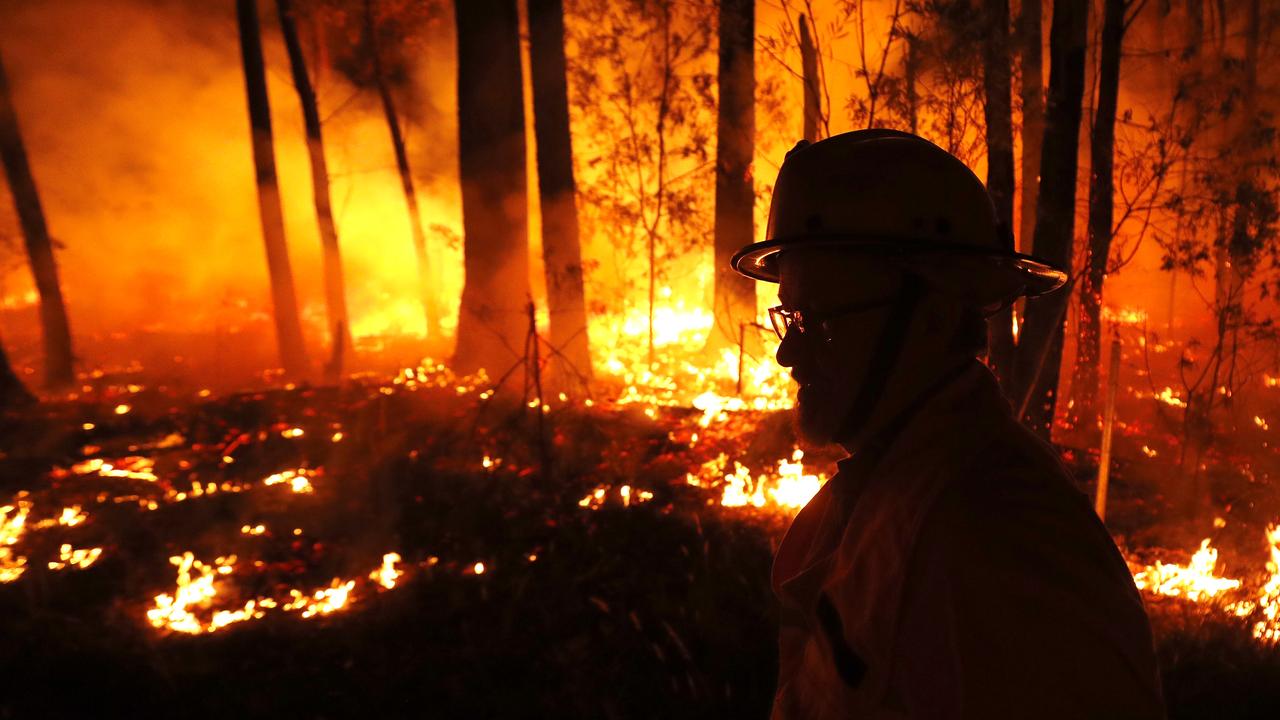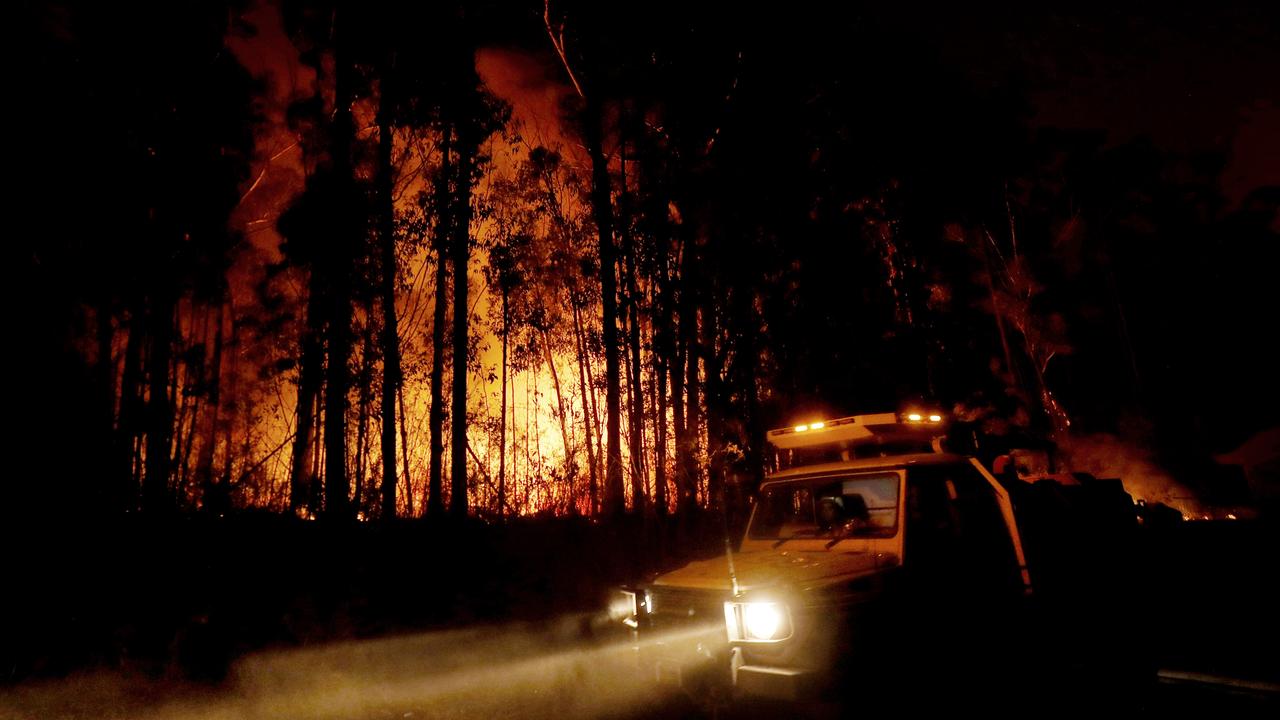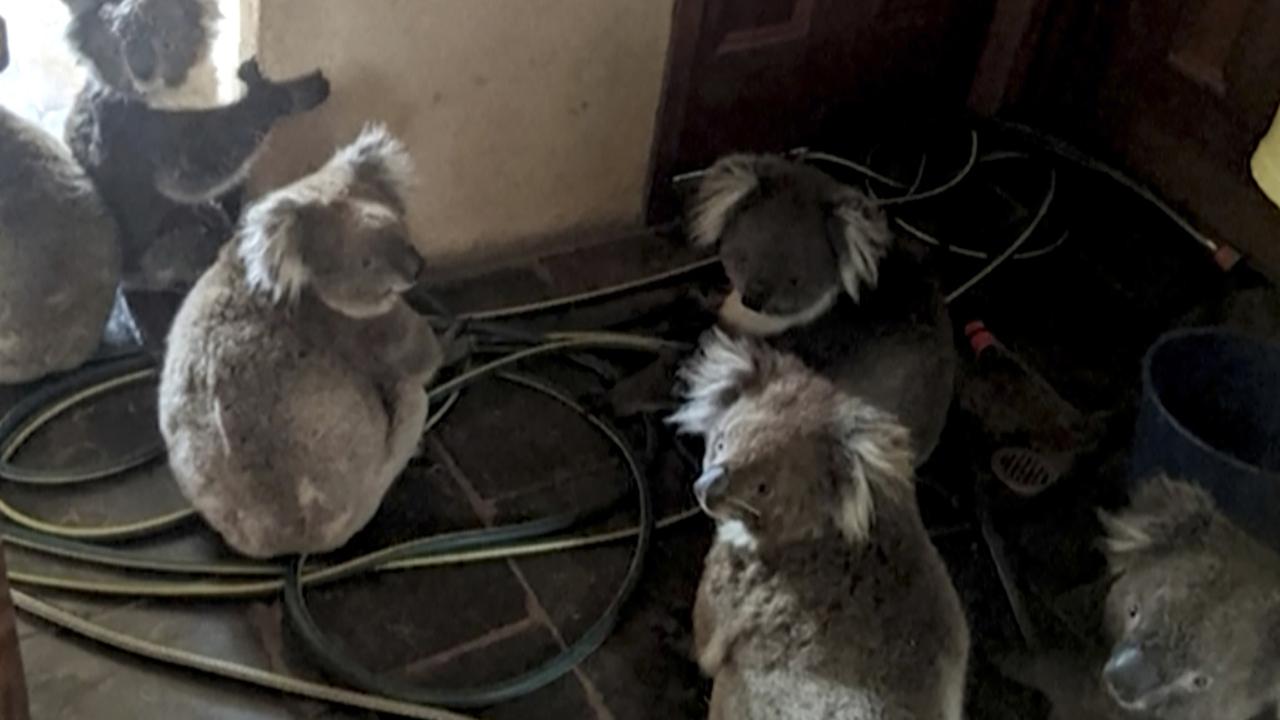The latest on the NSW and Victorian bushfires
At least 26 people have died in the bushfires, but the toll could rise dramatically. This is what we know so far about the fires.

Both New South Wales and Victorian authorities have warned the worse is far from over, telling residents to brace for more dangerous conditions on Thursday and Friday.
NSW police minister David Elliott said Friday would be another dangerous day for the state because of the heat, but hopes NSW has reached the peak of the bushfire crisis.
“After a couple of days and moist and mild weather, hopefully the fire grounds will be a little easier to manage,” he said.
“We remain vigilant. We remain supporting 2000-odd firefighters in the field.
“I think — with the aviation assets and new ones arriving, I think that this week will be considered the end of the beginning and I think what you will see at the end of this month is commencement of the mopping up exercises.”
In Victoria, rains that provided a respite from bushfires will start giving way to sunny weather across the state, with warmer conditions prompting warnings for people to remain vigilant.
Premier Daniel Andrews said people in the state’s northeast should pay attention to advice from authorities as the mercury rises on Thursday and Friday.
“Messages will be sent out Thursday and Friday this week,” the Premier said. “They are about life and death, and people need to remain vigilant. This is not over by a long shot.”
Meanwhile in South Australia, deteriorating weather conditions on Kangaroo Island have authorities fearful of further flare-up from a devastating bushfire.


This is what we know so far about the fires in Victoria:
WHERE ARE THE VICTORIA BUSHFIRES?
There are 14 individual blazes within the four main fire complexes in East Gippsland and the northeast. Thirteen of them are at the “watch and act” alert level, the second highest bushfire alert.
Temperatures in northeast Victoria are set to hit the low 40s on Thursday and Friday, while Bairnsdale and Orbost will hit the high 30s.
“We have challenges coming up for this area at the end of the week,” emergency management commissioner Andrew Crisp said. “It is about preparing people now.”
At least 204 homes have been confirmed destroyed in the fire disaster, and 1.2 million hectares of land has been razed.
Another 200 people have been rescued from the bushfire-ravaged coastal town of Mallacoota, where more than 1500 people have already been evacuated by military helicopters and ships MV Sycamore and HMAS Choules.
HMAS Choules returned to the town to extract 200 of the 342 people still wanting to flee, while the 142 people who remain are waiting to be airlifted out if conditions allow.
HOW MANY HAVE DIED?
Two people have died but the toll could rise dramatically.
The body of 67-year-old great-grandfather and town “larrikin” Mick Roberts was identified as the first victim of the East Gippsland’s bushfire tragedy.
Victorian Premier Daniel Andrews on January 3 confirmed a second person had died but told reporters he was “still not in a position” to provide any further information about that victim.
STATE OF DISASTER DECLARED
A state of disaster has been declared or the first time in Victoria, as deadly bushfires rage in East Gippsland and the northeast. The declaration gives the government the powers and resources to protect people and compel them to evacuate from at-risk areas.
WHAT AREAS ARE COVERED BY THIS DECLARATION?
East Gippsland Shire, Mansfield Shire, Wellington Shire, Wangaratta Rural Shire, Towong Shire, Alpine Shire, Mount Butler, Mount Hotham and Mount Stirling Alpine Resorts


This is what we know so far about the fires in NSW:
WHERE ARE THE NSW BUSHFIRES?
More than 119 blazes continue to burn across NSW on Wednesday, with more than 50 burning out of control.
A warning issued by the RFS said that Very High fire danger is expected in the Central Ranges and North Western and Southern Slopes.
A total fire ban is in place for the southern slopes, one of three districts west of the Great Dividing Range with “very high” fire danger forecast.
Lightning strikes in the Blue Mountains also have authorities worried, with dangerous fire conditions expected tomorrow and Friday.
HOW MANY HAVE DIED?
Twenty people have died since July, including three firefighters, as have million of wildlife animals. Ten people have died in the NSW bushfires in the past week.
The victims this bushfire season are:
• A 71-year-old man, who was reported missing on New Year’s Eve, was found on a burnt-out property in Nerrigundah
• A 47-year-old man died of a heart attack while helping a friend defend their property
• A 72-year-old man, reportedly off-duty RFS firefighter Colin Burns, was found in a car near Belowra
• A body, believed to be a 56-year-old man, was found outside a home at Coolagolite, east of Cobargo
• A 62-year-old man, yet to be formally identified, found in a vehicle on Wandra Rd at Sussex Inlet
• A 75-year-old man was found in a burnt out car near the Princes Highway at Yatte Yattah
• A 70-year-old man, named by local media as Laurie Andrew, found outside a Yatte Yattah home
• NSW RFS volunteer firefighter Samuel McPaul, 28, while fighting a fire in Jingellic
• Father and son Robert Salway, 63, and Patrick Salway, 29, found dead in Wandella, west of Cobargo
• NSW RFS volunteer firefighters Geoffrey Keaton, 32, and Andrew O’Dwyer, 26, killed when a fallen tree caused their truck to roll near Buxton in the Southern Highlands (December)
• Chris Savva, 64, was found in an overturned four-wheel drive near the burnt-out South Arm bridge, near Nambucca Heads
• A 59-year-old man, sheltered in a Yarrowitch water tank, died of injuries on December 29
• Barry Parsons, 58, found dead in bushland at Willawarrin, northwest of Kempsey (November)
• Julie Fletcher, 63, found in a burnt out building in Johns River (November)
• The remains of George Nole, 85, were found in a burnt out car near Glen Innes (November)
• Vivian Chaplain, 69, found unconscious with burns in Wytaliba and later died (November)
• Couple Bob Lindsey, 77, and Gwen Hyde, 68, were found dead in their home after the Long Gull fire in Coongbar (October)
As of Tuesday, two people remain missing on NSW’s fire-ravaged far south coast.
HOW MANY HOMES HAVE BEEN LOST?
Since January 1, 771 homes have been destroyed as a result of the NSW bushfires, a fire that is likely to increase as damage assessment teams access hard-to-reach areas.
Some 1,687 houses, 168 facilities and 3,372 outbuildings have been confirmed destroyed across NSW since July.
Land a third the size of England has been burnt.

SOUTH AUSTRALIA
Deteriorating weather conditions on Kangaroo Island have authorities fearful of further flare-up from the devastating bushfire that has destroyed more than 50 homes.
Temperatures will increase across the fire ground over the next two days with Thursday a day of particular concern, as winds increase ahead of a cool change.
So far the blaze has claimed 56 homes, 236 “outbuildings” and 257 vehicles and has burnt through 160,000 hectares.
“This is still a large fire, which is not controlled,” chief office Mark Jones said on Tuesday.
“The fire has caused extensive damage to the Flinders Chase conservation park and devastated a number of small communities and properties.”
The CFS has completed an aerial survey of the island to determine which areas are likely to be of most concern as temperatures push into the 30s.
New activity is expected on the eastern flank of the fire in areas including Snug Cove, Stokes Bay and in the Andamel, Mount Taylor and Lathami conservation parks.
The CFS plans to have more than 130 firefighters on the ground for the coming days of severe danger.
Four lives have been lost this bushfire season in South Australia:
• Pilot Dick Lang and his son, Clayton Lang, a surgeon, died in the Kangaroo Island fire on Saturday.
• Two lives lost (a 24-year-old man died in a car crash linked to a bushfire in the area at Lameroo in the Murraylands, and 69-year-old man Ron Selth was found dead at his Charleston property after the Cudlee Creek bushfire, both in December).



